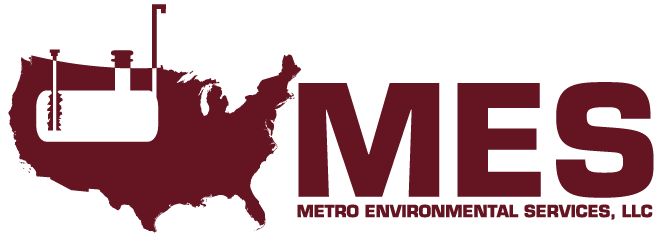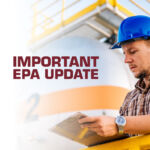Updated EPA Regulations – June 19, 2018
Regulations for replaced tanks and or piping
Beginning April 11, 2016, if tanks are being replaced, or if > 50% of piping is being replaced, then the tanks must have secondary containment. Piping must have two forms of secondary containment, line leak detectors (for pressure systems only) and tank top sump sensors for double wall piping. Owners are not required to meet the secondary containment requirements if their system is European or safe suction systems if piping is associated with airport hydrant systems.
Under Dispenser containment
Beginning April 2016, newly installed dispensers must have under dispenser containment (UDC or dispense sump). A dispenser system is considered new when both the dispenser and the equipment needed to connect the dispenser to the UST system are installed at an UST facility. Examples of equipment needed to connect the dispenser to the UST system include check valves, shear valves, unburied risers, flexible connectors or other transitional components underneath the dispenser which connect the dispenser to the underground piping.
Operating and Maintenance
Beginning on October 13, 2018 owners and operators must have their overfill prevention equipment inspected for proper operation at least once every three years. Overfill prevention equipment installed after October 13, 2015 must be inspected for proper operation at installation and then once every three years. Note that most installation codes of practice require inspecting overfill prevention equipment at installation – this would qualify as the first inspection. When inspecting, owners and operators must at a minimum ensure the overfill prevention equipment is set to activate at the correct level in the tank (the level depends on the type of overfill device) and will activate when regulated substances reach that level.
Spill Prevention and containment sump testing
Beginning on October 13, 2018 owners and operators must meet one of the following for spill containment equipment and for containment sumps used for piping interstitial monitoring:
Option 1: Spill prevention and containment sump equipment is double walled and the integrity of both walls is monitored at least as frequently as in the walkthrough inspection requirement (typically every 30 days for spill buckets but it may be longer if the facility receives infrequent deliveries, and annually for containment sumps). If owners and operators discontinue this periodic monitoring, they have 30 days to conduct the test described in option 2 below.
Option 2: Spill prevention equipment and containment sumps used for interstitial monitoring of piping are tested at least once every three years. The test must determine the equipment is liquid tight by using either vacuum, pressure, or liquid testing according to one of the following:
- Requirements developed by the manufacturer (owners and operators may only use this option if the manufacturer has developed testing requirements)
- A code of practice developed by a nationally recognized association or independent testing laboratory
- Requirements determined by the implementing agency to be no less protective than those developed by the manufacturer or in the code of practice
Spill prevention equipment and containment sumps used for interstitial monitoring of piping installed after October 13, 2015 must be tested for liquid tightness at installation and then once every three years. Note that most installation codes of practice require testing of this equipment for liquid tightness at installation – this would qualify as the first test.
Release detection equipment testing
Beginning on October 13, 2018 owners and operators must test electronic and mechanical components of their release detection equipment for proper operation at least annually using one of the following options:
· Automatic tank gauge and other controllers
- Test the alarm
- Verify the system configuration
- Test the battery backup
· Probes and sensors
- Inspect for residual buildup
- Ensure any floats move freely
- Ensure any shafts are not damaged
- Ensure the cables are free of kinks and breaks
- Test the alarm operability and communication with the controller
· Automatic line leak detector
- Ensure the device activates (alarms, restricts flow, or shuts off flow) within an hour when simulating a release equivalent to 3 gallons per hour at 10 pounds per square inch
· Vacuum pumps and pressure gauges –
- Ensure there is proper communication with sensors and the controller
Owners and operators must maintain records of release detection equipment testing for at least three years. The record must include each component tested, whether each component passed the test or needed to have action taken, and any action taken to correct an issue.
Heating Oil Tanks
Tanks used for the storage of heating oil for consumptive use on the premises where stored are excluded from federal UST regulations. However, state or local regulatory agencies may regulate these tanks. You should contact your state or local regulatory agency for more information. EPA developed the flow chart below to aid you in determining whether your UST qualifies for the heating oil tank exemption.





